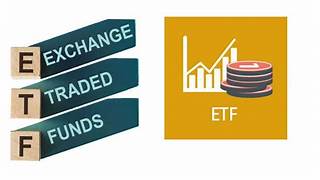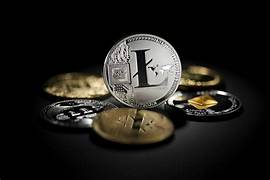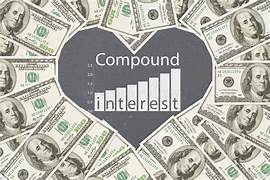Understanding ETFs and How They Work
If you’ve ever heard someone talking about investing in the stock market, there’s a good chance they’ve mentioned ETFs. These investment vehicles are increasingly popular with both new and seasoned investors. But what exactly are ETFs? Why have they become such a staple in modern investment strategies?
An Exchange-Traded Fund (ETF) is a type of investment fund that allows you to pool your money with other investors to buy a diversified portfolio of assets. Unlike mutual funds, which are traded at the end of the day, ETFs can be bought and sold throughout the trading day, just like individual stocks. This gives them the flexibility to respond to market changes in real time.
In this article, we’ll dive into the details of ETFs, their benefits, how they work, and how they can be an excellent addition to your investment strategy. Whether you’re new to investing or looking to diversify your portfolio, understanding ETFs can help you make more informed decisions.
1. What is an ETF?
An Exchange-Traded Fund (ETF) is essentially a basket of various assets, such as stocks, bonds, or commodities, that trade on stock exchanges, much like individual stocks. These assets are bundled together into a fund, and shares of the ETF are bought and sold by investors on the stock market.
ETFs are designed to track the performance of a specific index, sector, commodity, or asset class. For example, a popular S&P 500 ETF tracks the performance of the 500 largest publicly traded companies in the US. This allows investors to gain exposure to a broad market segment without having to buy each individual stock.
2. How Do ETFs Work?
Structure of an ETF
An ETF is managed by a fund manager who creates the fund by assembling a group of assets to represent a particular market index or sector. Once the fund is created, the manager offers shares of the ETF to investors. These shares can then be traded on the stock exchange just like regular stocks.
When you buy shares of an ETF, you’re essentially buying a tiny fraction of all the assets within that fund. The price of the ETF shares fluctuates throughout the trading day based on the value of the underlying assets.
The Creation and Redemption Process
One of the key differences between ETFs and mutual funds is the way they are created and redeemed. The creation and redemption process involves institutional investors (known as “authorized participants”). These participants can create new shares of the ETF or redeem shares for the underlying assets of the ETF.
This process helps to keep the price of an ETF in line with the value of its underlying assets. If there’s a significant difference between the price of the ETF and the value of the assets inside it, authorized participants can step in to help correct the discrepancy.
3. Types of ETFs
There are several types of ETFs, each designed to suit different investment needs. Here are some of the most common types:
1. Stock ETFs
These ETFs invest in a variety of stocks and aim to replicate the performance of a specific index, such as the S&P 500 or the NASDAQ-100. Stock ETFs allow investors to diversify their portfolio by gaining exposure to multiple companies with a single investment.
2. Bond ETFs
Bond ETFs invest in a collection of bonds, which can be government, corporate, or municipal bonds. These ETFs are ideal for investors looking for fixed-income exposure and lower risk compared to stock-based ETFs.
3. Sector and Industry ETFs
These ETFs focus on specific sectors or industries, such as technology, healthcare, or energy. Sector ETFs provide a way for investors to target specific areas of the market that they believe will outperform in the future.
4. International ETFs
International ETFs allow you to invest in foreign markets by tracking indices outside of your home country. These ETFs can be focused on specific countries, such as Japan or Germany, or on broader regions, like emerging markets or Europe.
5. Commodity ETFs
Commodity ETFs invest in physical commodities like gold, silver, oil, or agricultural products. These ETFs allow you to gain exposure to the commodity markets without needing to buy and store the physical commodities.
6. Thematic ETFs
Thematic ETFs invest in trends or themes, such as renewable energy, artificial intelligence, or cybersecurity. These ETFs focus on emerging sectors or industries that are expected to experience growth in the coming years.
4. Advantages of Investing in ETFs
1. Diversification
One of the primary benefits of ETFs is that they offer instant diversification. By purchasing shares of an ETF, you’re essentially buying a small stake in a variety of assets, which helps spread out your risk. This makes ETFs a great option for investors who want to reduce the risk of investing in individual stocks.
2. Lower Costs
Compared to mutual funds, ETFs tend to have lower expense ratios (the annual fees charged by the fund for management and operation). Since ETFs are passively managed and track an index, they generally incur fewer costs, which means more of your money is going towards the actual investment.
3. Liquidity
Unlike mutual funds, which are only priced at the end of the trading day, ETFs are traded throughout the day on stock exchanges. This means you can buy and sell ETF shares at any time during market hours, providing more flexibility and liquidity for your investments.
4. Transparency
ETFs are required to disclose their holdings on a regular basis, usually daily. This transparency allows you to know exactly what assets you’re invested in and how they are performing. This level of visibility is helpful for investors who want to stay informed about their investments.
5. Tax Efficiency
ETFs tend to be more tax-efficient than mutual funds due to the creation and redemption process. This mechanism helps limit the number of taxable events within the fund, reducing the capital gains distributions that investors might face.
5. Risks of Investing in ETFs
While ETFs have many advantages, they also come with certain risks. It’s important to understand these risks before investing:
1. Market Risk
Since ETFs are designed to track market indices or sectors, they are subject to market risk. If the market or specific sector performs poorly, the value of your ETF shares may decline.
2. Liquidity Risk
Although ETFs are generally highly liquid, some niche ETFs with smaller volumes or more obscure assets may have lower liquidity. This could make it harder to buy or sell shares at the desired price.
3. Tracking Error
Tracking error occurs when an ETF doesn’t exactly replicate the performance of its benchmark index. This can happen due to factors like management fees, transaction costs, or the method used to track the index. A high tracking error can cause the ETF to underperform the index it is designed to follow.
4. Overconcentration
Some ETFs may become overconcentrated in a particular sector or stock, leading to higher risk. For example, if an ETF is focused on a single industry or a small number of stocks, a downturn in that sector could significantly impact the performance of the ETF.
6. How to Invest in ETFs
Investing in ETFs is relatively straightforward. You can purchase shares of an ETF through a brokerage account, just like buying individual stocks. Most brokers offer a variety of ETFs, allowing you to choose from stock, bond, sector, and international ETFs.
1. Choose Your Brokerage Account
To start investing in ETFs, you’ll first need a brokerage account. There are many online brokers that offer commission-free trading for ETFs, such as Vanguard, Fidelity, or Charles Schwab. Choose a broker that offers low fees, a wide selection of ETFs, and a user-friendly platform.
2. Select the Right ETFs for Your Goals
Once you’ve set up your account, it’s time to choose the right ETFs for your investment strategy. Consider your financial goals, risk tolerance, and investment time horizon when selecting ETFs. A diversified portfolio may include a mix of different types of ETFs, such as stock, bond, and sector ETFs.
3. Monitor Your Investments
After investing in ETFs, it’s important to regularly review your portfolio and monitor your investments. Keep track of your ETF performance and make adjustments as needed based on your financial goals.
Conclusion
ETFs have become one of the most popular investment vehicles due to their diversification, cost-effectiveness, liquidity, and tax efficiency. They offer an easy way for investors to gain exposure to various asset classes, sectors, and regions with a single purchase. However, like all investments, ETFs come with risks, and it’s important to carefully consider your investment goals and risk tolerance before adding them to your portfolio.
Whether you’re a beginner or an experienced investor, ETFs provide a flexible and efficient way to build a diversified investment strategy. By understanding how ETFs work and the different types available, you can make informed decisions that align with your long-term financial objectives.
FAQs
1. What is the difference between ETFs and mutual funds?
ETFs are traded on exchanges like stocks and can be bought and sold throughout the day, whereas mutual funds are bought and sold at the end of the trading day. ETFs also tend to have lower fees than mutual funds.
2. Can I buy ETFs through my retirement account?
Yes, you can buy ETFs through tax-advantaged retirement accounts such as IRAs or 401(k)s, allowing you to benefit from tax-deferred growth or tax-free withdrawals (depending on the account type).
3. Are ETFs safe investments?
ETFs are relatively safe compared to individual stocks, but they still come with risks. It’s important to understand the specific risks associated with the ETF you’re investing in.
4. Can I sell my ETFs anytime?
Yes, since ETFs are traded on exchanges, you can buy or sell them anytime during market hours.
5. How do I choose the best ETF for me?
Consider factors like your investment goals, risk tolerance, and the type of assets you want exposure to. You can choose ETFs based on stock, bonds, commodities, or specific sectors.
6. Do ETFs pay dividends?
Many ETFs pay dividends if the underlying assets generate income, such as stocks or bonds. These dividends can be reinvested or paid out to you.
7. How are ETFs taxed?
ETFs are generally more tax-efficient than mutual funds, but you’ll still need to pay taxes on capital gains and dividends. The tax treatment will depend on the type of ETF and whether you hold it in a tax-advantaged account.






